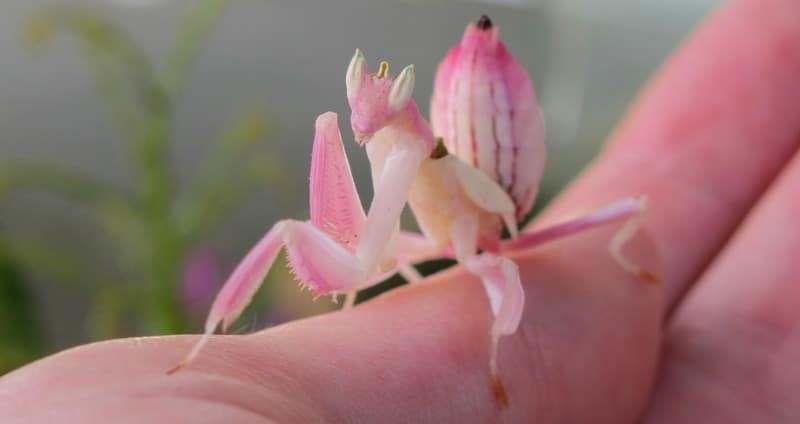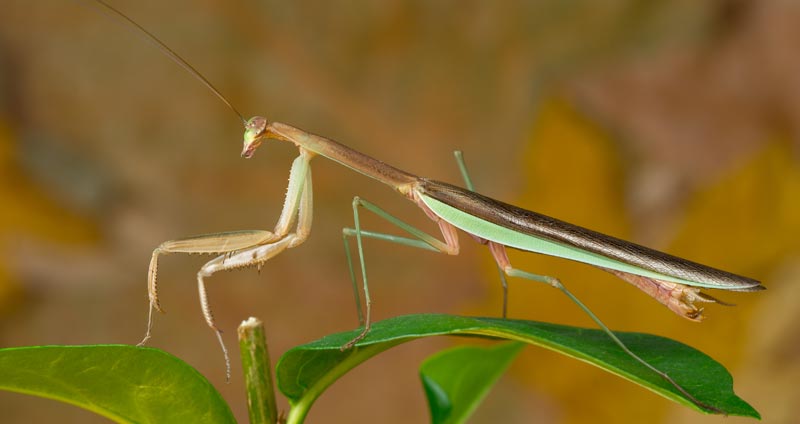Praying mantis are some of the most intimidating and interesting insects on the planet. Their long, slender bodies and “praying” arms make them look like excellent hunters.
Do they have any abilities beyond their karate-like moves, though? More specifically, do praying mantis possess poison that helps them deter predators?
With some of the bright-colored mantis species out there, this idea doesn’t seem too far-fetched.
Table of Contents
Are Praying Mantis Poisonous?
There’s no need to worry, as praying mantis are not poisonous. There is not a single mantis species that possesses any sort of poison.
When a praying mantis is ingested, they won’t make their attacker sick unless they have a parasite or recently ingested pesticides.
So, in short, there’s no chemical danger when it comes to praying mantis.
Why Are Some Praying Mantis Bright-Colored Then?
There are quite a few different species of praying mantis, and some of them are very brightly-colored. For example, the Orchid Mantis is a beautiful pink and white.
It’s commonly-known that insects and other animals use bright colors to warn predators that they’re poisonous. If praying mantis don’t have poison, what’s up with these colors?
Basically, they’re colored this way because it’s how they hunt!
Praying mantis do most of their hunting by blending in to their surroundings. They’ll match the flowers around them to lure in unsuspecting insects, and then they’ll reach out, grab them, and quickly incapacitate them.
Different species of mantis will be different colors depending on the type of plants around their natural habitats.
So, instead of using colors to ward off predators, they use them to attract prey!

Praying Mantis Bite/Venom
Many people get poison and venom confused. Poison matters when something is eaten, and venom matters when that thing bites something else.
Now, fortunately, praying mantis don’t possess any venom, either! They don’t inject any venom when biting their prey — they rely upon the physical action of biting/tearing to kill their prey.
Now, praying mantis can bite, and it does happen infrequently. Because they use their bite to rip apart their prey, if they mistaken your finger for an insect, they may bite you.
These are insects and are ultimately unpredictable with their actions. However, they’re usually able to tell that they don’t need to be biting you.
How Do Praying Mantis Defend Themselves?
If praying mantis aren’t poisonous, aren’t venomous, and rarely bite, how do they defend themselves?
Well, their defense can ultimately be summed up with their agility. Despite their awkward appearance, praying mantis are great at running away from danger.
A praying mantis can leap significant distances in the blink of an eye, and most males are able to fly surprising distances.
They also don’t take fall damage, so they can jump down off of a tree or other high location without fear of harm.
So, praying mantis don’t pose a threat in the form of physical harm — they just run away from potential danger. Very noble of them!

